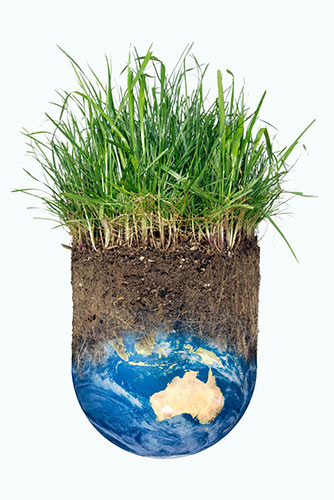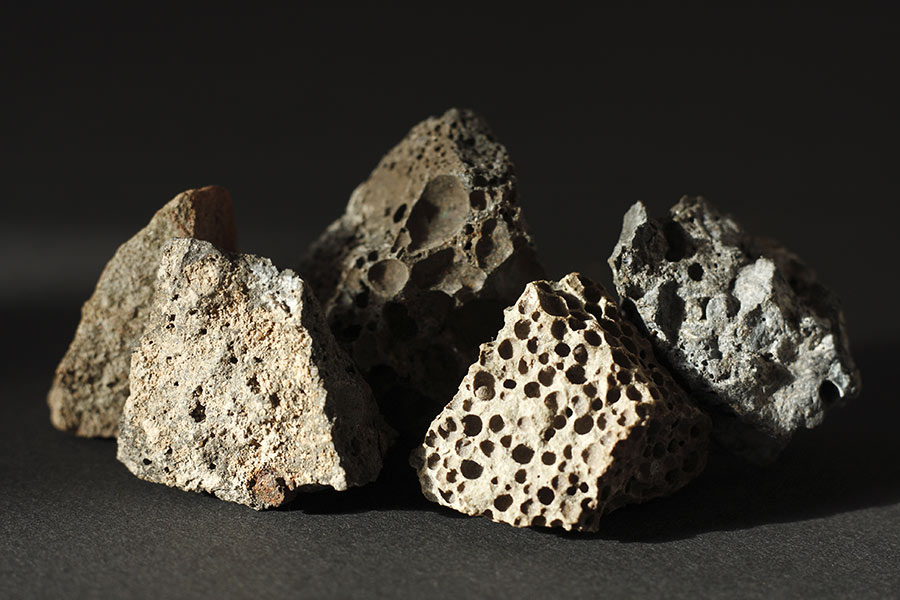Benefits From Below: Using Plant Silicon To Resist Stress
Last Updated: 3 years ago
Shortlink to this page: Plant productivity is often threatened by biotic and abiotic stresses, ranging from herbivorous pests to environmental extremes such as drought.
Plant productivity is often threatened by biotic and abiotic stresses, ranging from herbivorous pests to environmental extremes such as drought.
There is growing consensus that plant silicon can alleviate many of these stresses by improving plant defences against herbivores (e.g. physical structures and secondary metabolites) and altering physiological processes in the plant (e.g. water use efficiency).
How does silicon do this and can we exploit it for plant protection?
Answering these questions is central to a new research program at the Hawkesbury Institute for the Environment.
Six projects commencing in 2017-18 are investigating how plants challenged by environmental change and herbivore attack (above- and belowground) could benefit from plant silicon.
We aim to identify the molecular, physiological and chemical mechanisms underpinning these benefits and develop translational opportunities for plant protection.
Projects
The program of research is overseen by Associate Professor Scott Johnson in collaboration with colleagues from HIE, Universities in Australia and overseas and industry partnerships.
- Time to prime: using silicon to activate grass resistance under higher CO2. ARC Future Fellowship awarded to Scott Johnson and employing Dr Casey Hall.
- Down to earth defence: unlocking soil-derived defences for plant protection. ARC Discovery Project employing Dr Rebecca Vandegeer.
- Primed to retaliate: how silicon helps plants to ‘anticipate and remember’ attack by insect herbivores. PhD Project supervised with Dr Chris Cazzonelli and Professor Sue Hartley
- Impacts of silicon supplementation on multi-trophic species interactions above- and below-ground involving plants, insects and soil biota. PhD Project supervised with Associate Professor Jeff Powell and Professor Sue Hartley. In cooperation with Australian Steel Mill Services.
- Down to earth defense: How mutualistic fungi augment silicon-based defense against above- and belowground insect pests. PhD project supervised withAssociate Professor Jeff Powell in collaboration with INIA (Uruguay), University of York (UK) and AgResearch (New Zealand).
- Enhancing direct and indirect plant defences through silicon supplementation in grasses. Rhiannon Rowe. Masters Project supervised by Scott Johnson.
Study systems
We work mainly on grasses, including cereals, and legumes such as lucerne. Our research is becoming increasingly focussed on Brachypodium distachyon, which is regarded as a model species for understanding molecular and cellular processes in temperate grasses.
Our projects incorporate a range of foliar (e.g. Helicoverpa armigera and Rhopalosiphum padi) and root herbivores (e.g. Dermolepida albohirtum and Sericesthis geminata), some of their natural enemies (e.g. Aphidius ervi) and plant microbial mutualists (e.g. arbuscular mycorrhizal fungi, nitrogen-fixing bacteria and endophytes).
In terms of abiotic stresses we are focussing mainly on elevated atmospheric carbon dioxide concentrations and altered precipitation patterns, using both controlled environments and field-based platforms.
Plant Silicon Research Group

Jamie Waterman (PhD Student - Project 3)

Rocky Putra (PhD Student - Project 4)

Ximena Cibils Stewart (PhD Student - Project 5)

Rhiannon Rowe (Masters Student)
Research Collaborators
- Australian Steel Mill Services (Marc Smith and Gavin Tory)
- Professor Justin Borevitz, Australian National University
- Dr Chris Cazzonelli, HIE
- Dr Adam Frew, Charles Sturt University
- Professor Sue Hartley, University of York, UK
- Dr Alexie Papanikolaou, HIE
- Dr Alison Popay, AgResearch
- Associate Professor Jeff Powell, HIE
- Professor David Tissue, HIE
- Dr Piotr Trebicki, Agriculture Victoria Research

Steel slag is a potentially rich source of silicon that could be used to provide increased stress resistance to common crops.
Recent silicon papers from HIE
Johnson, S.N. & Hartley, S.E. (2018) Elevated carbon dioxide and warming impact silicon and phenolic-based defences differently in native and exotic grasses. Global Change Biology, Online early: DOI: 10.1111/gcb.1397.
Johnson, S.N., Hartley, S.E., Ryalls, J.M.W., Frew, A., DeGabriel, J.L., Duncan, M. & Gherlenda, A. (2017) Silicon-induced root nodulation and synthesis of essential amino acids in a legume is associated with higher herbivore abundance. Functional Ecology, 31, 1903-1909.
Johnson, S.N., Ryalls, J.M.W., Gherlenda, A., Frew, A. & Hartley, S.E. (2018) Benefits from below: silicon supplementation maintains legume productivity under predicted climate change scenarios. Frontiers in Plant Science, 9, 202.
Frew, A., Powell, J.R., Sallam, N., Allsopp, P.G. & Johnson, S.N. (2016) Trade-offs between silicon and phenolic defences may explain enhanced performance of root herbivores on phenolic-rich plants. Journal of Chemical Ecology, 42, 768-771.
Moore, B.D. & Johnson, S.N. (2017) Get tough, get toxic, or get a bodyguard: Identifying candidate traits conferring belowground resistance to herbivores in grasses. Frontiers in Plant Science, 7, 1925.
Frew, A., Allsopp, P.G., Gherlenda, A. & Johnson, S.N. (2017) Increased herbivory under elevated atmospheric carbon dioxide concentrations is reversed by silicon-based plant defences Journal of Applied Ecology, 54, 1310-1319.
Ryalls, J.M.W., Hartley, S.E. & Johnson, S.N. (2017) Impacts of silicon-based grass defences across trophic levels under both current and future atmospheric CO2 scenarios. Biology Letters, 13, 20160912.
Frew, A., Powell, J.R., Allsopp, P.G., Sallam, N. & Johnson, S.N. (2017) Arbuscular mycorrhizal fungi promote silicon accumulation in plant roots, reducing the impacts of root herbivory. Plant and Soil, 399, 29-39.
Frew, A., Powell, J.R., Hiltpold, I., Allsopp, P.G., Sallam, N. & Johnson, S.N. (2017) Host plant colonisation by arbuscular mycorrhizal fungi stimulates immune function whereas high root silicon concentrations diminish growth in a soil-dwelling herbivore. Soil Biology and Biochemistry, 112, 117-126.
Johnson, S.N., Benefer, C.M., Frew, A., Griffiths, B.S., Hartley, S.E., Karley, A.J., . . . Robert, C.A.M. (2016) New frontiers in belowground ecology for plant protection from root-feeding insects. Applied Soil Ecology, 108, 96-107.


